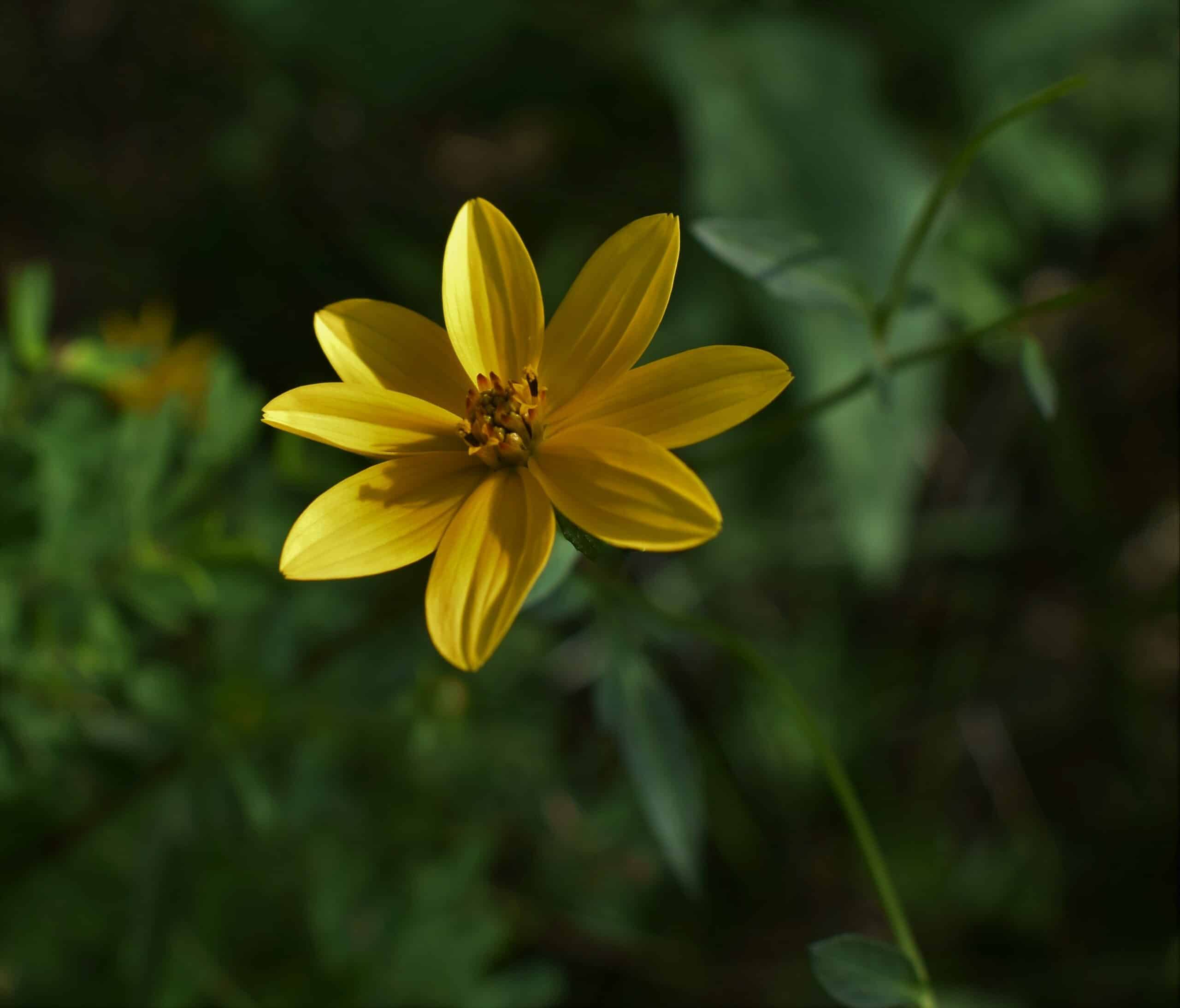You’re walking down the street and spot a vibrant yellow flower in someone’s garden – it’s a Coreopsis! Instantly you are taken aback by its beauty and wonder how you can have such a stunning flower growing in your own garden. You may not know it yet, but with this plant care guide, you can make that dream a reality.
Coreopsis is one of the most beautiful plants for any flower bed or garden. It has an airy texture and delicate petals, with vibrant colors ranging from soft yellows to deep reds. Plus, it’s easy to grow and maintain – perfect for those who don’t have much experience with gardening. With this guide, you can learn all about Coreopsis: its care needs, growing tips, and more!
From learning how to prepare soil to caring for Coreopsis after it blooms, this guide contains everything you need to know about growing this gorgeous flower. With just a little effort and dedication, you too can have a stunning display of Coreopsis in your own garden – no green thumb required!
Coreopsis Varieties
Coreopsis is a delightful addition to any flower garden. It’s colorful blooms and hardy nature make it an ideal choice for gardeners of all levels. Like a symphony of petals, the variety of coreopsis is vast and captivating. Each type has its own unique characteristics, making it easy to find one that fits perfectly in your garden.
The first step to finding the right coreopsis for you is getting familiar with the different varieties available. Coreopsis comes in a wide array of shapes, sizes, and colors; from tall and spiky to short and mounding. Some are even drought-tolerant, making them perfect for those dry areas of your garden. Additionally, some varieties even offer fragrant blooms that will bring sweet scents to your landscape.
No matter what type you choose, coreopsis will add vibrant color and texture to your flower beds or borders. Its bright yellow petals look beautiful when planted alongside purples, blues, whites and pinks – creating a stunning visual effect in any garden setting. With a little research into the various types available, you can easily find the perfect coreopsis for your space!
With so many options for adding coreopsis to your garden, now’s the time take advantage of this beautiful flowering plant – providing eye-catching blooms throughout the season that you can enjoy for years to come. So get out there and start exploring what this wonderful plant has to offer!
Coreopsis Planting And Care
With its bright, cheerful blooms, Coreopsis can be a beautiful addition to any garden. But before planting this vibrant flower, there are a few important steps to take that will ensure its success. So let’s dive in and explore the best ways to plant and care for Coreopsis.
When it comes to planting Coreopsis, timing is key. Plant this annual flower in spring or fall when the soil is workable. If it’s too cold or wet, wait until the conditions improve before planting this cheery bloomer. The soil should also be well-draining and have good fertility as Coreopsis doesn’t do well in waterlogged conditions.
After planting, regular watering is essential for healthy growth. Aim for about 1 inch of water per week and monitor during hot weather as the plants may need more frequent irrigation. Also consider mulching around the base of your Coreopsis plants to help conserve moisture in the soil and keep weeds at bay. Finally, deadhead spent blooms to encourage more flowers throughout the season and provide light pruning if necessary to keep plants looking their best.
By following these simple tips for planting and caring for Coreopsis, you’ll have no trouble getting these cheerful flowers up and blooming in your garden! Now let’s move on to understanding what kind of soil requirements this colorful bloom needs for optimal growth… …and nutrition.
Coreopsis Soil Requirements
Growing healthy coreopsis plants requires high-quality soil. To demonstrate this, take the example of Mary, a home gardener who was struggling to keep her coreopsis alive for more than two weeks. After doing some research, she learned that the key to successful coreopsis growth is the right soil.
Soil is the foundation of any garden, and coreopsis is no exception. Coreopsis plants need well-draining soil that’s high in organic matter and nutrients. Sandy loam or sandy clay soils are ideal for this plant as they provide good drainage and plenty of air space for roots to grow in. Adding compost or mulch will help improve water retention and nutrient levels in these soils. Additionally, coreopsis needs lightly acidic soil with a pH between 5.5 and 7.0 for optimal growth.
Taking care of your coreopsis starts with understanding its soil requirements; making sure you have the right type of soil before planting can make all the difference when it comes to getting your garden off to a strong start. With proper soil preparation and ongoing maintenance, you can ensure that your coreopsis plants get all they need to thrive in your garden or container. The next step is providing them with adequate light conditions so they can reach their full potential!
Light Requirements For Coreopsis
When growing coreopsis, light requirements play an important role in their successful growth. Coreopsis need at least six hours of full sun each day to thrive and develop healthy flowers. While some varieties can tolerate partial shade as well, they may not produce as many blooms.
Make sure the site you choose for your coreopsis receives plenty of sunlight and is open to the south or west. When grown in a container, provide the coreopsis with a high-quality potting soil that is well-draining and amended with organic matter. Additionally, trim any dead or dying foliage on a regular basis to ensure optimal plant health.
Coreopsis are relatively low-maintenance plants and can tolerate some drought conditions, but it’s important to make sure they’re getting enough water. To keep your plants healthy and blooming, water them consistently while keeping an eye out for signs of overwatering or underwatering. With proper care and attention, you’ll be rewarded with bright yellow blooms all season long! Moving forward, let’s look at how we can best meet coreopsis’ water requirements for optimal growth.
Coreopsis Water Requirements
Watering your coreopsis plants can be a delicate dance. Too little, and the plants will suffer from drought, but too much and you’ll drown them. It’s important to get it just right! Here is a 4-point list to help you tend to your coreopsis garden:
- Generally speaking, coreopsis will need an average of 1 inch of water per week during the growing season.
- Keep an eye on the soil to decide when it needs more water – look for signs that the top two inches are dry.
- When you do water, make sure to provide a deep soaking so that it reaches down into the root zone.
- Take care not to overwater – standing water in your coreopsis beds can lead to root rot.
It’s also important to note that if you live in an area with heavy rainfall during the summer months, you may not need to water at all – Mother Nature will take care of it! However, if there is a lack of rain or very hot temperatures, then additional watering may be necessary. As with other aspects of garden care and maintenance, keeping an eye on your coreopsis plants and adjusting accordingly is key.
Knowing how much and when to water your coreopsis plants can make or break their success – luckily, with some attentive observation and care, you can ensure they thrive! Now let’s discuss how fertilizing plays a role in keeping these lovely flowers happy and healthy.
Coreopsis Fertilizer Needs
As we journey deeper into the world of plant care, let’s take a look at our next step – coreopsis fertilizer needs. Now, before we begin this time-traveling expedition to the realm of fertilizers, let’s make one thing clear: without proper fertilizer, your coreopsis will be struggling to thrive.
So what does your beloved flower need? Coreopsis requires an all-purpose fertilizer that is low in nitrogen and usually applied in early spring. If you’d like to get the most out of your coreopsis foliage, consider adding a slow-release granular fertilizer after planting. Additionally, you should pay special attention to the amount of phosphorus in the fertilizer as it can help improve root development and overall plant health. Lastly, if you notice any yellowing leaves or signs of nutrient deficiencies on the plants, it may be time for an extra dose of liquid fertilizer!
With these tips in mind, we can now focus on propagating coreopsis – an essential skill for any green thumb!
Propagating Coreopsis
Propagating coreopsis is like a miraculous act of nature. It can be done through either seeds or cuttings, each with its own unique benefits and ease of use.
For starters, growing coreopsis from seed is the most inexpensive and straightforward method. All you need is some consistent moisture, good soil, and plenty of sunshine! With this method you’ll have beautiful blooms in no time at all. Plus, there’s the added bonus of being able to choose a variety that fits your garden’s needs perfectly.
On the other hand, propagating through cuttings is a bit more involved but it does give you more control over the outcome. Cuttings provide you with a clone of the parent plant which means you’ll get identical results every time! This is especially helpful if you’re looking for something specific like a particular color or bloom size.
No matter which way you choose to propagate coreopsis, it’s sure to bring beauty and joy to your garden! The key is patience as well as understanding your climate and soil conditions so that your plants will thrive. Now that we’ve discussed how to propagate coreopsis, let’s move on to pruning and maintenance so we can keep these beauties looking their best year-round.
Coreopsis Pruning And Maintenance
Maintaining a healthy coreopsis plant can be easy when regular pruning and maintenance are part of the care routine. Pruning and deadheading, or removing faded flowers, encourages more blooms and allows the plant to remain vigorous. If left unpruned, coreopsis will produce fewer flowers but will still continue to flower for several years in the garden.
Regularly snipping off spent blooms is the most effective way to keep your coreopsis looking its best. This also prevents them from self-seeding, which can lead to an overgrowth of coreopsis in the garden if not managed properly. When pruning, it’s important to remove only the older stems as too much trimming could weaken the plant or reduce flowering.
The foliage of a mature coreopsis should be cut back in late winter or early spring to help promote fresh growth in the new season. With proper pruning and maintenance, your coreopsis plants will stay beautiful and healthy for many seasons to come. Transitioning into proper pest and disease prevention practices is essential for keeping these beloved plants looking their best!
Coreopsis Pest And Disease Prevention
As the sun shines down on the delicate petals of the coreopsis, its vibrant colors sparkle like a diamond in the garden. Pruning and maintenance are essential for keeping this beautiful bloom at its best, but it’s also important to protect it from potential pests and diseases. With a few proactive steps, you can ensure that your coreopsis remains healthy and continues to add charm and color to your outdoor space.
The first step in pest and disease prevention is to be aware of any potential threats in your area. Research common pests and diseases that could affect coreopsis, such as aphids, whiteflies, powdery mildew, or root rot. When you encounter these issues early on, you can take steps to prevent them from getting worse.
You should also provide the right conditions for your coreopsis to thrive by planting it in well-draining soil with plenty of sunlight. Keep an eye out for any signs of poor health such as wilting leaves or discoloration so you can address them quickly before they become more serious problems. To reduce the risk of pests or diseases invading your garden, consider using natural methods such as companion planting or mulching around your plants.
With proper care and preventive measures, you can keep your coreopsis looking its best all season long. The next step is learning how to use this beauty in your landscape design – an exciting task that will bring even more life to your garden!
Coreopsis Uses In The Garden
Coreopsis, with its bright and cheerful blooms, is a popular addition to any garden. Aptly called “tickseed” for its propensity to spread like clockwork, this resilient flower has many uses in the garden that make it an ideal choice for any gardener. Let’s explore these uses further.
To begin with, coreopsis can be used as a ground cover plant due to its ability to spread quickly and easily. Furthermore, it can be planted in large drifts to fill in space between other plants or used as an edging along walkways and pathways. Additionally, it can form a colorful border along fences or buildings and provide an eye-catching backdrop for showier flowers. Lastly, coreopsis can also be used as a cut flower and placed in bouquets or arrangements.
With such versatility, coreopsis is a great companion plant for anyone looking to add some extra beauty and color to their garden. Its easy maintenance requirements ensure that even novice gardeners will have success growing this stunning flower – making it a wonderful addition to any outdoor space!
Coreopsis Companion Planting
Companion planting with coreopsis is a great way to increase the beauty of your garden. It helps to have plants that work together for the good of each other, as well as for creating a stunning display. Coreopsis is an ideal companion plant because it’s easy to grow and will attract pollinators and beneficial insects.
By combining coreopsis with other plants that have similar growing requirements, you can create an attractive, healthy garden. Planting flowers such as daisies or sunflowers nearby will provide plenty of color in the summer months while also providing food for bees and other pollinators. You could also add plants such as yarrow or lavender which both look beautiful when combined with coreopsis and are beneficial for repelling pests.
Creating an environment where coreopsis can thrive is essential for getting the most out of your garden. With thoughtful companion planting, you’ll be able to enjoy these vibrant flowers throughout the warmer months without having to worry about pests or lack of pollination. Now that we’ve discussed companion planting, let’s move onto how to best care for coreopsis during winter months.
Coreopsis Winter Care
Irony-filled words that describe Coreopsis in the winter can be quite amusing; this flower may not always seem like the toughest of plants, but it has an amazing ability to survive even harsh cold seasons. From frosty mornings to below-freezing temperatures, Coreopsis still finds a way to thrive while other plants struggle. However, if you want your Coreopsis flowers to look their best and survive until the next season, there are some important winter care tips you need to follow.
One of the most important steps for winterizing your Coreopsis is to cut back the stems and foliage of your plant at least six inches above soil level. This will help prevent rot over the winter months and will also give your flowers more exposure to sunlight during warmer periods when they’re trying to grow new stems and foliage. Additionally, you should mulch around your garden bed with straw or leaves for extra insulation throughout the coldest months.
Finally, make sure you check on your Coreopsis every two weeks or so during the winter months to ensure that everything is going as planned. If necessary, water during milder spells of weather and make sure there’s no excess moisture building up in the soil that could lead to mold or disease. With these coreopsis winter care tips in mind, your flowers should remain healthy right up until harvest time!
Harvesting Coreopsis
Gathering the vibrant yellow blooms of coreopsis is like picking a bouquet of sunshine. Harvesting these cheerful flowers by snipping them off the stem requires careful attention and skill. Here are three quick tips to help you get started:
- Cut the stems at an angle for maximum water uptake.
- Make sure you cut in the morning when the dew has dried from the petals.
- Wear gloves when harvesting to protect against thorns or other irritants.
To extend the life of your harvest, it’s important to properly store coreopsis flowers after they have been cut. Keeping them in a cool area away from direct sunlight will ensure their beauty is enjoyed for as long as possible. If you’re crafty, there are several ways to dry and preserve your coreopsis including using glycerin, pressing, or waxing them. With a little effort and some creativity, these beautiful blooms can bring joy all year round! Now let’s look at how we can save and store our coreopsis…
Coreopsis Saving And Storing
When it comes to harvesting and storing coreopsis, one must take great care. The vibrant hues of the petals of this flower are truly mesmerizing, almost as if they contain a secret world within them. It’s not hard to imagine why so many gardeners strive to keep their coreopsis blooming throughout the year.
For those looking to store coreopsis for future use, the key is to harvest it at the right time. When flowers are ready for cutting, petals should be fully open and in their peak coloration stage. This is when their fragrance and flavor reach their highest levels. Once harvested, place them in a vase with fresh water and store in a cool dark place away from direct sunlight or heat sources.
Be sure to change the water every few days for best results. Additionally, you may choose to hang your flowers upside down as this will help retain moisture and aroma, allowing them to last longer. By following these simple steps and taking proper care of your coreopsis, you can enjoy its beauty for months!
Coreopsis Troubleshooting And Tips
Troubleshooting and tips for coreopsis can seem daunting, especially if you’re a first-time gardener. But with a few simple pieces of advice, these stunning plants will be thriving in no time. Let’s take a look at how to keep your coreopsis in tip-top shape.
Firstly, it’s important to ensure your coreopsis are always planted in well-draining soil. If you find that the soil is too wet or soggy, be sure to add some compost or other organic matter to help improve drainage. Additionally, make sure the spot where you plant your coreopsis has plenty of sunshine – they need at least six hours of direct sunlight each day!
When it comes to watering your coreopsis, make sure not to overdo it. These plants prefer consistently moist soil rather than being soaked every day – allow the top inch or so of soil to dry out between waterings. You’ll also want to fertilize your coreopsis once every month or two during their growing season (spring and summer). A balanced fertilizer should do the trick!
Finally, don’t forget about pruning your coreopsis plants every now and then. Deadheading spent blooms is essential for promoting new growth and flowering. Simply use a pair of sharp scissors or garden shears and snip off any dead flowers heads just above the foliage – easy peasy! With these tips in mind, you can be sure that your beautiful coreopsis will remain healthy and vibrant for many seasons to come.
Frequently Asked Questions
What Is The Best Time Of Year To Plant Coreopsis?
The best time to plant Coreopsis is in the early spring, when the weather begins to warm up. Planting this perennial flower in the spring will allow it to establish itself before the heat of summer arrives. This will also give it plenty of time to grow strong before winter sets in. To further ensure its success, most gardeners recommend adding compost or other organic matter to the soil prior to planting.
When planting Coreopsis, make sure you space the plants about 12-18 inches apart for maximum air circulation and light exposure. Since these flowers prefer full sun, they should be planted in a sunny spot with well-draining soil. In addition, you’ll want to water them regularly throughout the growing season and mulch around them during times of drought.
Overall, with a little extra care and attention, your Coreopsis plants can thrive in your garden for years! By planting them at the right time of year and providing them with proper soil conditions and adequate sunlight, you can create a stunning display of beautiful blooms that will bring joy all season long.
How Much Space Should I Leave Between Coreopsis Plants?
We’ve all heard the old adage “good things come in small packages” – but when it comes to planting Coreopsis, that couldn’t be further from the truth! In order to ensure your plants get enough space to thrive and grow, you need to give them room. To make sure their roots don’t overcrowd or compete for nutrients, leave at least six inches between each of your plants.
When planting Coreopsis, it pays to plan ahead. It can be tempting to just cram as many as possible into a flower bed, but this is not recommended – not only will it mean that your plants won’t have enough space to develop properly, but they may also start competing with each other for resources like water and sunlight. So if you want a beautiful display of blooms, make sure you leave some breathing room between your plants!
Whether you are looking at a small garden or a larger one, taking the time to consider spacing is key in creating an attractive flower bed. With careful consideration of how much space should be left between Coreopsis plants, you can create an amazing flower arrangement that looks stunning and lasts for years!
Can I Grow Coreopsis In Containers?
Yes, you can grow coreopsis in containers! This is a great option for those who have limited outdoor space or need to move their plants around. In fact, container gardening is on the rise. Over 40% of U.S. households now engage in this activity, according to a survey by the National Gardening Association.
If you decide to grow coreopsis in containers, it’s important to choose the right pot and soil mix. Coreopsis prefer well-draining soil with plenty of organic matter such as compost or rotted manure mixed in. You’ll also want to select a pot that’s at least 12 inches deep and has drainage holes at the bottom so excess water can seep out.
Once your container is ready, simply plant your coreopsis just as you would in an outdoor garden bed, spacing each one 10–15 inches apart. Make sure to water them regularly during dry periods and fertilize every month during their growing season. With proper care, your coreopsis should thrive in its new home!
How Often Should I Prune Coreopsis?
As you stand in your garden, admiring the beauty of the Coreopsis, you may find yourself asking: how often should I prune it? Pruning can be tricky, but with the right techniques, it can help to keep your Coreopsis blooming and flourishing.
The timing of pruning is especially important when it comes to this flower. If you prune too early in the season, you will be cutting off new growth, leading to fewer flowers. But if you wait too long, some of the old flowers may have already gone to seed or died off. It’s a delicate balance that requires careful attention.
So when should you start pruning? The best time for Coreopsis is late winter or early spring before any buds appear. This will ensure that all new growth gets a chance to take root and flourish. To keep your Coreopsis looking its best throughout the season, trim off any dead or dying blooms as they appear throughout summer and fall. With regular pruning and care, your Coreopsis will remain beautiful from spring through fall!
How Long Will Coreopsis Bloom For?
As a garden enthusiast, you may have noticed the bright, cheerful yellow and red flowers of Coreopsis blooming in your garden. The coreopsis plant is an excellent choice for adding color to any garden, but how long will it last? With proper care and maintenance, this resilient flower can last up to four months!
The key to keeping Coreopsis blooming is through regular pruning. Pruning encourages new growth and prevents the flowers from becoming overcrowded. It also helps reduce disease and pests that can attack the plant. When pruning, only remove dead or damaged parts of the plant. By doing this simple task every few weeks, you can ensure that your Coreopsis will keep producing vibrant blooms for months on end!
By following these simple steps, you’ll be able to enjoy the beauty of Coreopsis all season long. Not only are they beautiful but they also attract bees and other pollinators which help keep your garden thriving. And because they’re easy to care for, they make a great addition to any garden! So next time you’re looking for flowers with lasting power, don’t forget about Coreopsis – it won’t disappoint!
Conclusion
Coreopsis is a beautiful and hardy plant that can bring beauty to any garden. It’s easy to grow, requires little maintenance, and blooms for months on end – making it an ideal choice for both beginner and experienced gardeners alike. With its bright yellow flowers, it’s sure to draw attention in any garden.
To get the most out of your Coreopsis plants, it’s important to understand when is the best time of year to plant them, how much space should be left between plants, if they can be grown in containers, how often they should be pruned, and how long they will bloom for. With the right knowledge and care, Coreopsis can bring beauty to your garden for up to six months each year.
In fact, according to research conducted by the University of California Agriculture & Natural Resources department, Coreopsis can produce up to 3x more flowers when planted in sunny locations with well-drained soil. This makes it an ideal choice for anyone looking for a low-maintenance but highly rewarding flower garden experience.
With its vibrant colors and relatively simple care requirements, Coreopsis is an excellent addition to any flower garden – no matter what level of gardening experience you have!





























